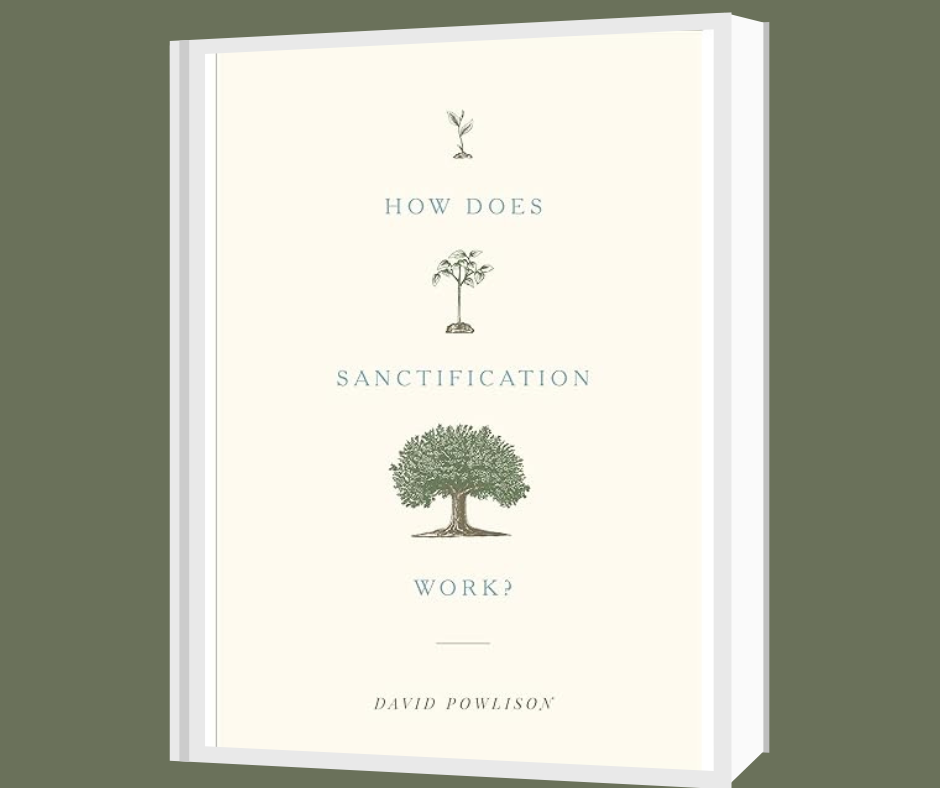Book Reviews
How Does Sanctification Work? by David Powlison | Review by Rosa Byler

The process of sanctification can be a controversial topic. One complicating factor is people’s natural desire to find simple, foolproof methods for becoming more Christ-like; another is our tendency to construct those, formulating general principles from experiences that have brought us a measure of sanctification. How Does Sanctification Work? proposes that even the best of our strategies only meagerly imitate the abundance of God’s means.
David Powlison defines sanctification in a variety of ways, from “making a turn for the better” to “living with an ever-growing love, joy, and purposefulness” to “maturing in wisdom, hope, and faith (13)” and onward to specifics about changed behavior. Using the Gospel of John as a template for studying sanctification, he portrays Jesus’ interactions with people as perfectly suited to the individual situation but based on deeper theological patterns. Powlison connects these and other personal stories with a biblical exposition of those patterns.
A morning-devotions encounter illustrates one such means of sanctification with varied applications: the intersection of “God’s hand, Scripture, and life experience (20).” During a difficult time, both Powlison and his wife found comfort, purpose, and focus from a passage in Deuteronomy, yet each responded differently and to a different aspect of the verses they had read. This typical example helps to expose the limitations of classic sanctification one-liners: Remind yourself of your identity in Christ! Place yourself in an accountability relationship! Serve others! Remember that God is sovereign! Engage in spiritual warfare! Establish habits of Bible reading, prayer, and corporate worship!
All of the above, while true and helpful, are only components of the whole. Powlison’s thesis statement requires some thought to process: “Ministry ‘unbalances’ truth for the sake of relevance; theology ‘rebalances’ truth for the sake of comprehensiveness (33).” When we counsel someone, we cannot speak every truth at once--we contribute what is relevant to the particular situation (“unbalancing” truth). A thorough acquaintance with the broad scope of Scriptural teaching, though, is needed to “balance” one specific truth to its entirety.
Although circumstances differ, five factors consistently surface as “cooperating elements” of sanctification. God Himself changes people through His “immediate and personal presence.” God’s Word changes us as Scripture reveals truths about God and about life. Wise people change us, whether they actually preach and teach or are merely good role models. Difficulties change us—we seek change when life is hard, not when it is going well. And we change as we continuously engage in such action verbs as repenting, turning, asking for help, believing, trusting, and more.
The book ends with three lengthier stories of sanctification, actual case studies demonstrating the above five elements at work to effect transformation and reorientation. One is the story Powlison is most familiar with: his own. Brought up in a church-going family, he rejected its nominal Christianity but was converted in college at the age of twenty-five. He also tells the story of “Charles,” who experienced in-the-moment sinful responses to the betrayal of friends; and “Charlotte,” whose conflicts were mostly inward due to long-standing unhealthy perspectives and reactions.
As a teacher, counselor, and longtime observer of sanctification or the lack thereof, Powlison is well-equipped to write a book on the subject. Most of it is simply written, in his usual style; but some readers may find new terms and complex thoughts in a very few places. Persevere and look up unfamiliar words; I did. The teaching is accessible; the topic, indispensable. My main takeaway was the joyful hope for change that we find in Christ; a secondary realization was the way we limit the work of God in ourselves and others by simplistic formulas for sanctification.